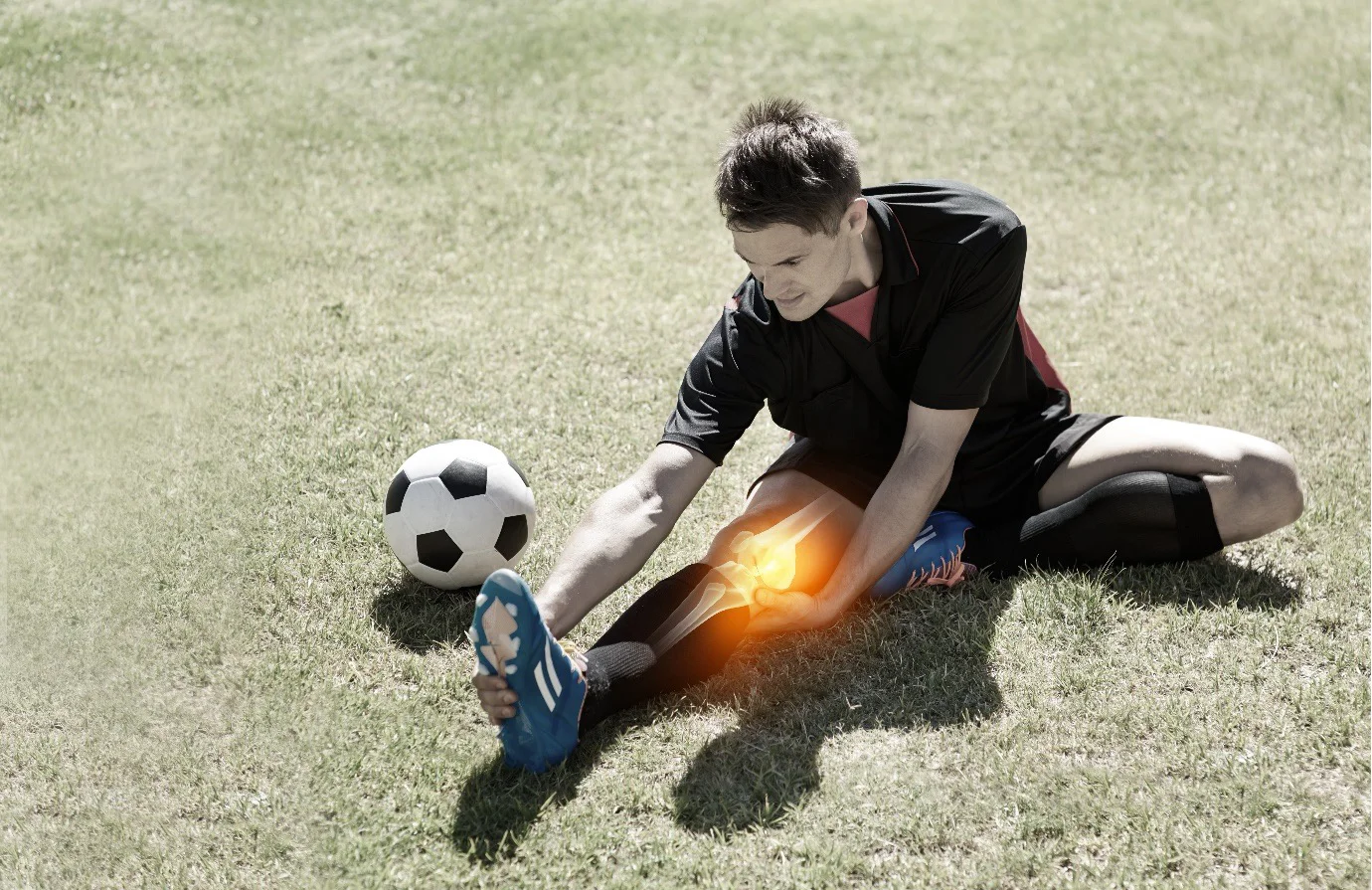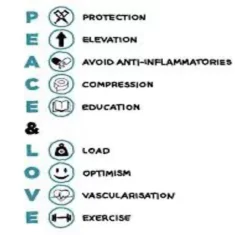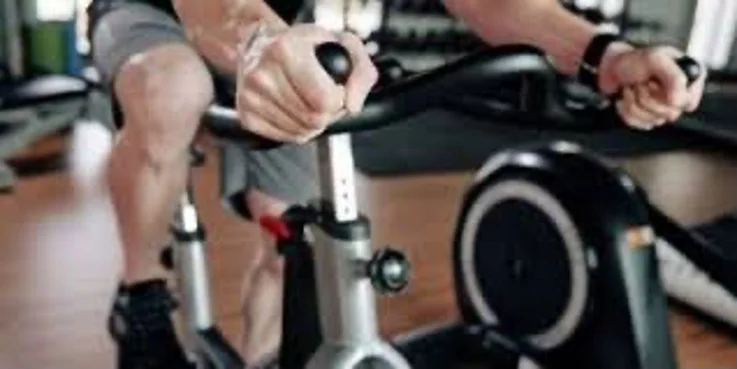
As physiotherapists we get plenty of questions on how to best manage an injury when it first starts. Guidance has changed over the years starting with RICE, then progressing onto PRICE (Protect, Rest, Ice, Compression, Elevation). In more recent times the acronym POLICE (Protect, Optimal loading, Ice, Compression, Elevation) has been used, which adopted the principle that early activity accelerates tissue healing and promotes early recovery. However, all these previous methods of managing injury failed to incorporate the sub-acute and chronic stages of healing.

The gold standard for injury management is still yet to be determined, however research in constantly developing. A more appropriate acronym has been developed in recent years which incorporates the entire rehabilitation process from immediate care to subsequent management. This acronym is PEACE & LOVE!
PEACE – Protect, Elevate, Avoid anti-inflammatory modalities, Compress and Educate. PEACE focuses on immediate care following a soft tissue injury.
- Protect – During the first 1-3 days you want to unload or restrict movement. This is to focus on minimizing bleeding, and minimising the risk of re-injury or re-aggravating the injury. Rest should be minimised as prolonged rest can have negative effects – compromising tissue strength and quality.
- Elevate – Make sure to elevate the limb higher than the heart to promote fluid flow out of tissue – reducing swelling.
- Avoid anti-inflammatory modalities – Inflammation helps to repair damaged soft tissues. Recent research has showed that by using anti-inflammatory medications we may negatively affect long term tissue healing, as we are disrupting the natural inflammatory process in the body. The same principle applies to the use of ice. This can be quite a controversial topic; the majority of clinicians still maintain the use of ice and medications in their treatment as it can help with pain relief and also help increase activity which will further promote healing. I generally advise people to use ice/medications for pain management, but only if absolutely needed.
- Compress – Use of tape or bandaging helps limit swelling and internal tissue bleeding.
- Educate – Educating the patient about the condition and load management can have better results than overtreating the condition with “hands on” treatment. It is important to set realistic expectations with patients regarding recovery times and treatment approaches.
LOVE – Load, Optimism, Vascularisation, Exercise. LOVE focuses on the subsequent management of the injury.
- Load – An active approach with movement and exercise is recommended for patients. Activity should be added as soon as symptoms allow. Optimal loading helps to promote repair, remodel and build ligament, tendon and muscle tissue tolerance. As a result, patients should exercise (within their capabilities) once pain is not exacerbated.
- Optimism – Optimistic patient expectations are linked to better outcomes and prognosis. As a result, it is important for clinicians to educate and re-assure their patients, regarding their symptoms and highlighting that they will improve with treatment.
- Vascularisation – Cardiovascular activity/exercise can help boost motivation and increase blood flow to injured structures. Incorporating early mobilization (walking) and aerobic exercise (swimming/exercise bike), improve physical function, promote earlier return the work and reduce the need for pain medication. It is important to get active as soon as possible after injury, ensuring that the exercise is pain free of course.
- Exercise – Exercise following injury helps to restore mobility, strength, balance and proprioception. Pain should be avoided to ensure optimal results, and this is how clinicians determine exercise progressions.

So, when managing soft tissue injuries going forward it is important that you remember to give PEACE a chance, because all soft-tissue injuries need is a little LOVE.
- Dubois, B. and Esculier, J., 2019. Soft-tissue injuries simply need PEACE and LOVE. British Journal of Sports Medicine, 54(2), pp.72-73.
- Bleakley, C., Glasgow, P. and MacAuley, D., 2011. PRICE needs updating, should we call the POLICE?. British Journal of Sports Medicine, 46(4), pp.220-221.

Green Bay Physio offers expert, holistic physiotherapy in Auckland. We combine hands-on treatment, exercise, and lifestyle advice to help you manage pain, recover from injuries, and maximize your potential.
Discover how Green Bay Physio can help you move better and live well.
